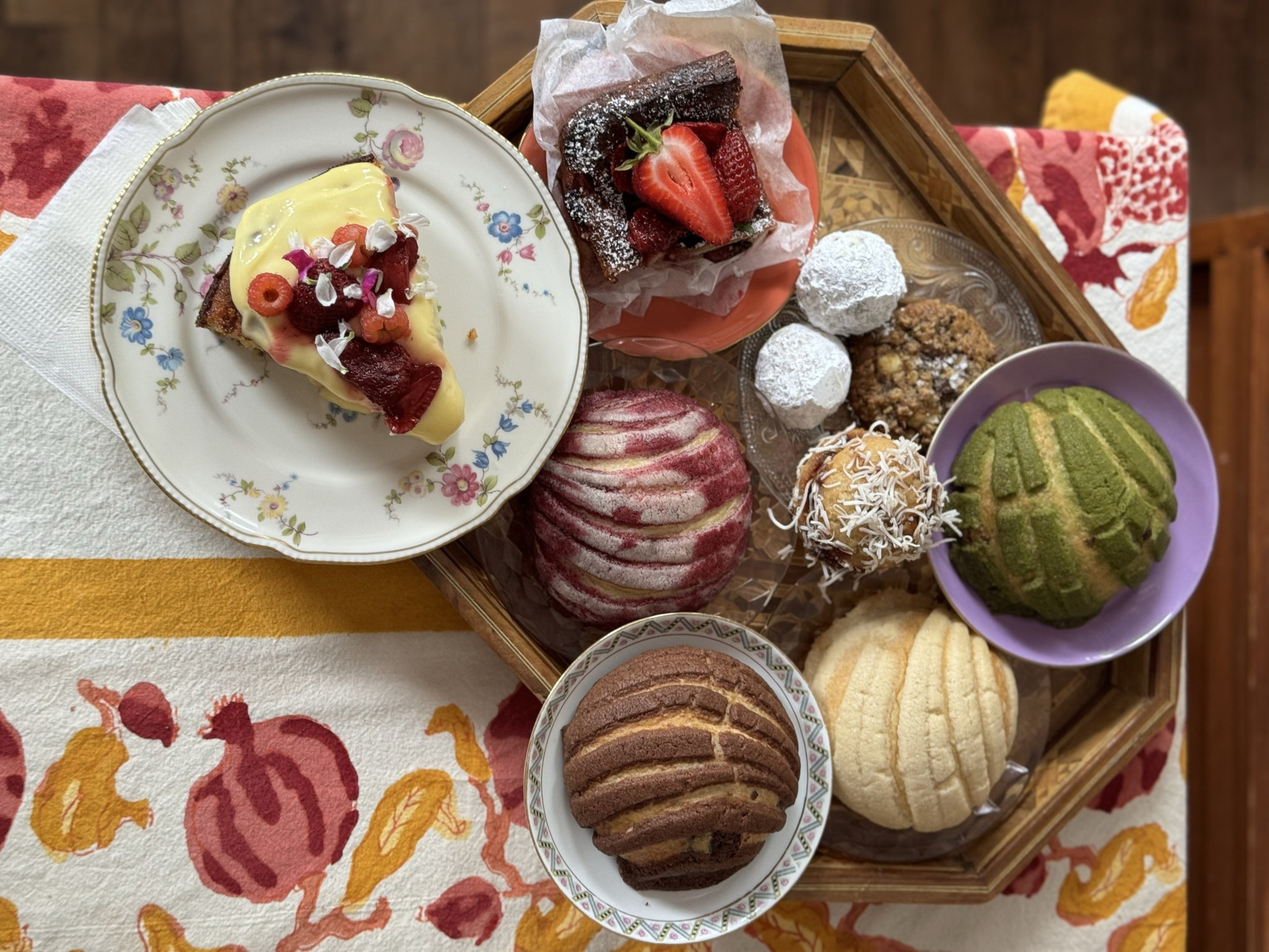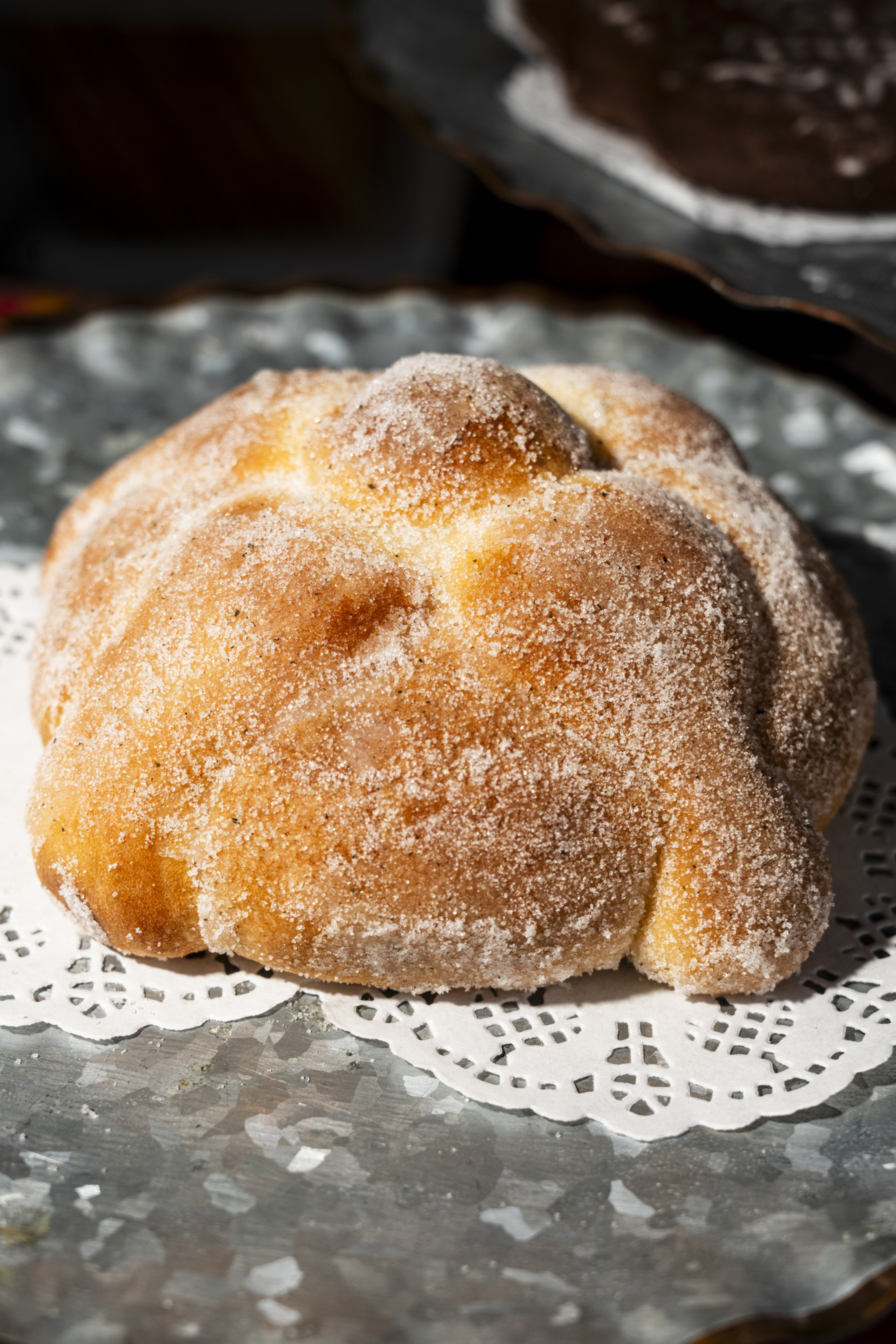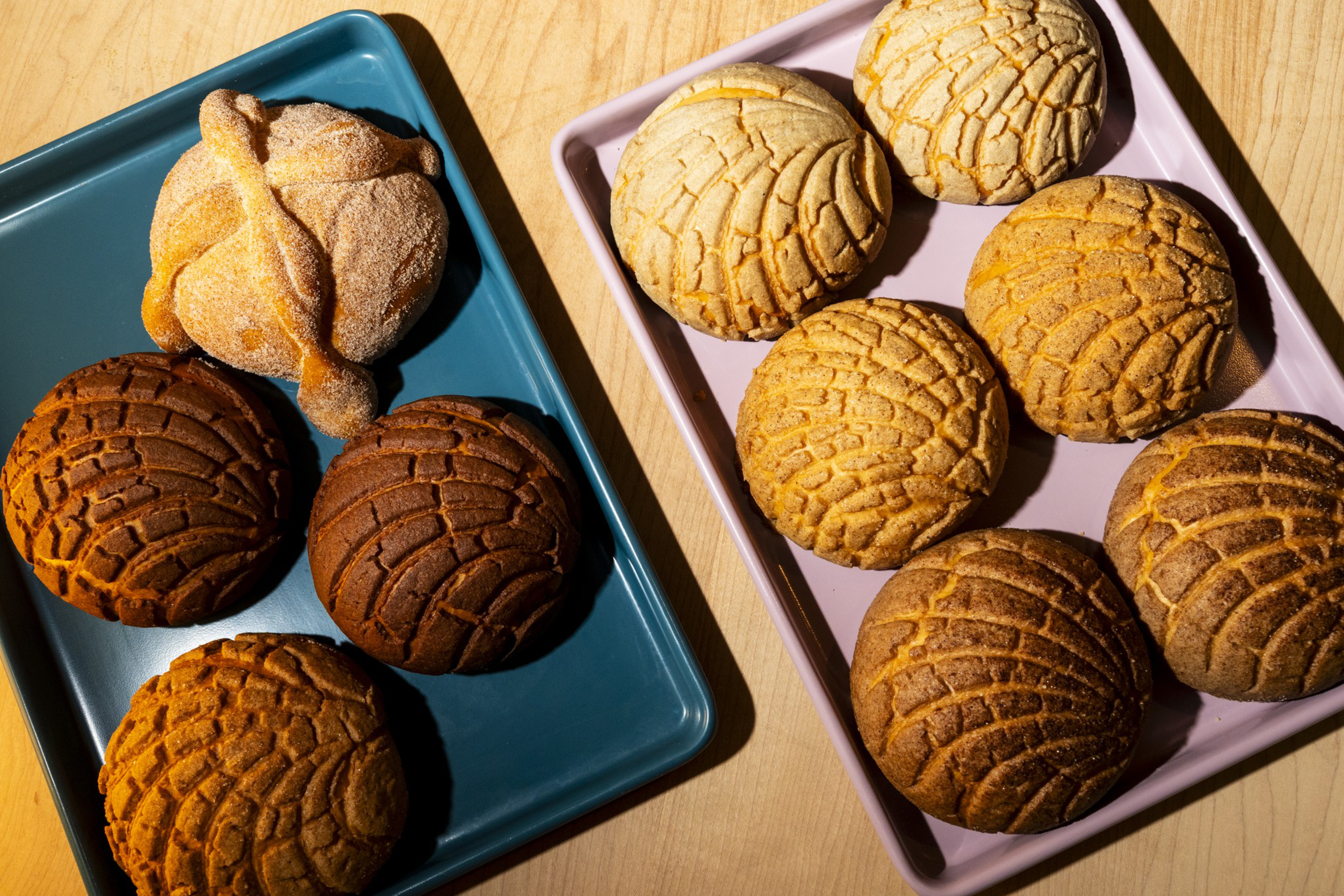At 6 a.m. on a spring morning in 2023, Stephany Gocobachi was wandering through her grandfather’s hometown of Alamos in the Mexican state of Sonora, looking for a panaderia. Usually bustling with tourists who come to admire the colonial architecture, the town center was quiet, save for the clucking of free-roaming chickens.
Gocobachi — a San Franciscan who cut her teeth as a pastry chef at Danny Meyer’s Maialino in New York — wasn’t interested in the chic, French-style bakery that had recently opened in Alamos. Instead, she followed vague directions up winding roads through residential neighborhoods to find the kind of bakery her grandparents might have frequented decades before. Eventually, she found a nondescript panaderia run by three older men who pulled pan dulce from a wood-fired oven. She took one bite of a concha and decided to stay the rest of the morning to take it all in.
At 33, Gocobachi, a Mexican American pastry chef, had never tasted anything quite like that pan dulce — so simple yet so light, with delicate, nuanced flavor. “This is the moment I decided to open my own bakery,” she says.
Though she’d been baking at San Francisco pop-ups under the name Panaderia Matijila, Gocobachi kicked her pan dulce game into high gear after that fateful trip, bringing her baked goods to taquerias and coffee shops across the Bay.

She is one of a growing number of upstart pastry chefs responsible for the Bay Area’s vibrant array of pan dulce, a broad category that covers a variety of Mexican baked goods, including pan de muerto, often eaten on Dia de los Muertos, which falls on Nov. 1 and 2. In the past five years, other Mexican Americans have launched bakeries, including Norte 54, Florecita Panaderia, Amidulce, and Pain Pan Bakery, all of which are looking to redefine what Mexican pastries can be.
“Mexican pastries have gotten such a bad rap in this country,” Gocobachi says. “To me, that’s sad, because there’s no respect for the tradition, which is vast. There aren’t really places where you can go to learn something that isn’t a very Eurocentric baking tradition in the U.S. It’s a disappearing art, and it’s a lot of interest to me to preserve that.”
But if the flavors and textures of Gocobachi pan dulce feel modern, she says that’s only because the traditional way of baking them — with quality ingredients — has become so rare. “What I’m doing isn’t modern at all,” she says. “What I’m trying to do is go backward to the root of it, to how it’s supposed to be.”
Raquel Goldman, who started her pop-up Norte 54 after working as a pastry chef at Nopa, bakes with a similar mindset. Whereas commercial pan dulces often use cheaper ingredients like refined sugars and vegetable shortening, she makes her dough from scratch using little more than eggs, whole grain flour, and butter to produce conchas with a texture not unlike that of French brioche. “Nothing about bread is modern,” Goldman says with a laugh. “We’re harkening back to traditions that come from way long ago.”
But even if her pastries are rooted in tradition, they feel uniquely Californian — and in that way, like something entirely new. “I see younger millennials who were either born in Mexico and raised here in California who see these pan dulce and recognize its Mexican-ness, but also then recognize how San Franciscan it is,” Goldman says.
This mindset yields pan dulce like Gocobachi’s lemon verbena conchas or chewy blue-corn masa cookies with bright hibiscus icing. During the fall, Goldman serves pillowy bigotes, a mustache-shaped sweet bread filled with a light pumpkin cream, and garibaldis, a sort of upside-down cupcake made with soft almond pound cake topped with ginger plum jam.
Al Toral, who runs pop-up Pain Pan Bakery in Sacramento, infuses his artistic conchas with unconventional flavors, including candied orange, black sesame, and pumpkin cheesecake. Amiduce, a mother-daughter operation in San Francisco, incorporates freeze-dried strawberries into concha dough and fresh strawberries in the Talavera-inspired sugar topping to impart a deeper flavor.



For Ximena Williams of Florecita Panaderia in the Mission, concha flavors are shaped by her binational upbringing. Born in Mexico City and raised in Atlanta, Williams started her concha-focused bakery out of her home in 2023 and opened a brick-and-mortar the following year. “I’m incorporating flavors that remind me of home, which means they can be from here and from Mexico,” she says.
Over the seasons, her eggless pan dulce — she substitutes apple cider vinegar for eggs so her husband, who has an allergy, can enjoy them, too — come in flavors like peach pie, pumpkin spice, blue corn, churro, and strawberry hibiscus.
Williams did not experience the kind of mythic-level quest that inspired Gocobachi to reimagine pan dulce in her own way. But somewhere along the way of baking conchas, garibaldis, and cochinitos, all of these bakers have gone through a process of rediscovery to reconnect with their Mexican heritage.
“I tell people I came out as Mexican through baking,” says Goldman. “For the longest time, my upbringing, how I went through my education, was all very American. To be able to be more rooted in the Mexican side now is so special.”
